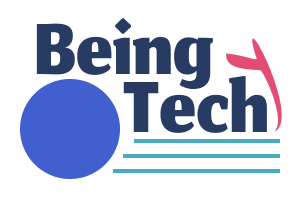What is Chat GPat
ChatGPT is an advanced language model developed by OpenAI. It is based on the GPT-3.5 architecture, which stands for "Generative Pre-trained Transformer 3.5." GPT-3.5 is an upgrade to the previous GPT-3 model, incorporating improvements in language understanding, generation, and context retention.
ChatGPT is designed to engage in conversational interactions with users, making it particularly suited for chatbot applications. It can understand and generate human-like text based on the input it receives. The model has been trained on a diverse range of internet text, allowing it to generate responses that are coherent and contextually relevant.
The training process involves exposing the model to vast amounts of text data, enabling it to learn grammar, facts, reasoning abilities, and some level of world knowledge. However, it's important to note that ChatGPT does not possess true understanding or consciousness. Instead, it relies on patterns in the data it has been trained on to generate responses.
ChatGPT has a wide range of potential applications, including providing customer support, answering questions, generating conversational agents, tutoring, writing assistance, and more. Its versatility and ability to adapt to various conversational contexts make it a valuable tool for developers and organizations seeking to enhance their interaction with users.
It's worth mentioning that while ChatGPT is an impressive language model, it may occasionally produce incorrect or nonsensical responses. It also lacks real-time updating and may not be aware of recent events or developments beyond its knowledge cutoff (September 2021, in the case of this model). OpenAI continues to refine and improve its language models to mitigate these limitations and provide more accurate and reliable results.
ChatGPT offers several advantages:
1. Natural Language Understanding: ChatGPT has a strong ability to comprehend and interpret natural language. It can understand a wide range of queries, instructions, and conversation contexts, making it highly effective in interacting with users.
2. Context Retention: Unlike earlier models, ChatGPT has an improved ability to retain context over longer conversations. It can refer back to previous messages in a conversation, allowing for more coherent and contextually relevant responses.
3. Versatility: ChatGPT can be adapted to various applications and domains. Its broad training on internet text provides it with a wide knowledge base, making it useful in multiple contexts, such as customer support, content generation, brainstorming, and more.
4. User Interaction: ChatGPT is designed to generate text that mimics human-like conversation. It can engage in back-and-forth exchanges, ask clarifying questions, and provide informative responses, leading to a more interactive and engaging user experience.
5. Scalability: OpenAI's GPT models, including ChatGPT, can handle large volumes of concurrent user interactions. This scalability allows organizations to deploy chatbots or virtual assistants powered by ChatGPT to handle customer queries or provide support to a large user base.
6. Rapid Deployment: As a pre-trained model, ChatGPT can be readily deployed without the need for extensive training on custom datasets. This makes it easier and faster for developers to integrate and utilize the model in their applications.
7. Constant Learning: Although ChatGPT does not possess real-time updating, it can still be fine-tuned on specific datasets to improve its performance in specific domains or applications. OpenAI provides tools and resources to developers, allowing them to adapt ChatGPT to better suit their needs.
8. Improved Language Generation: GPT-3.5, the architecture underlying ChatGPT, includes enhancements in language generation capabilities. It can generate more coherent, contextually appropriate, and nuanced responses, resulting in a higher-quality conversational experience.
These advantages make ChatGPT a powerful tool for creating interactive chatbots, virtual assistants, or other conversational AI applications, enabling organizations to provide better customer support, streamline information retrieval, and enhance user engagement.
While ChatGPT has many strengths, it also has certain limitations:
1. Lack of Understanding Context: Although ChatGPT has improved context retention compared to previous models, it can still struggle with understanding nuanced or complex contexts. It may sometimes provide responses that are technically correct but not contextually appropriate or accurate.
2. Overconfidence and Incorrect Responses: ChatGPT can generate responses with a high level of confidence, even if the answer is incorrect or nonsensical. It is important to verify the accuracy of its responses, especially when dealing with critical or sensitive information.
3. Sensitivity to Input Phrasing: The phrasing and wording of user queries can significantly impact the quality of responses. ChatGPT may provide different answers or varying levels of detail based on slight changes in how a question is posed, leading to inconsistent results.
4. Lack of Real-Time Updates: ChatGPT's knowledge is based on data available up until its last training cutoff (September 2021). It does not have access to real-time information or recent events, which can limit its ability to provide up-to-date or timely responses.
5. Biased or Inappropriate Responses: The training data for ChatGPT is sourced from the internet, which means it can reflect biases and misinformation present in online content. ChatGPT may inadvertently generate biased or inappropriate responses, and it's crucial to be vigilant about monitoring and addressing such issues.
6. Inability to Ask for Clarification: While ChatGPT can generate clarifying questions, it may not always seek further information when faced with ambiguous or unclear queries. This can lead to incorrect or irrelevant responses when the model misinterprets user input.
7. Ethical Considerations: Deploying language models like ChatGPT raises ethical concerns, such as the potential for misuse, spreading disinformation, or impersonation. Careful oversight and responsible deployment are necessary to mitigate these risks.
8. Resource Intensive: Running ChatGPT requires significant computational resources, making it challenging for individuals or organizations with limited computing power to use the model at scale.
OpenAI acknowledges these limitations and actively seeks to address them through ongoing research and improvements to their models. They also encourage user feedback to identify and rectify issues, enhance safety measures, and refine the capabilities of their language models.

